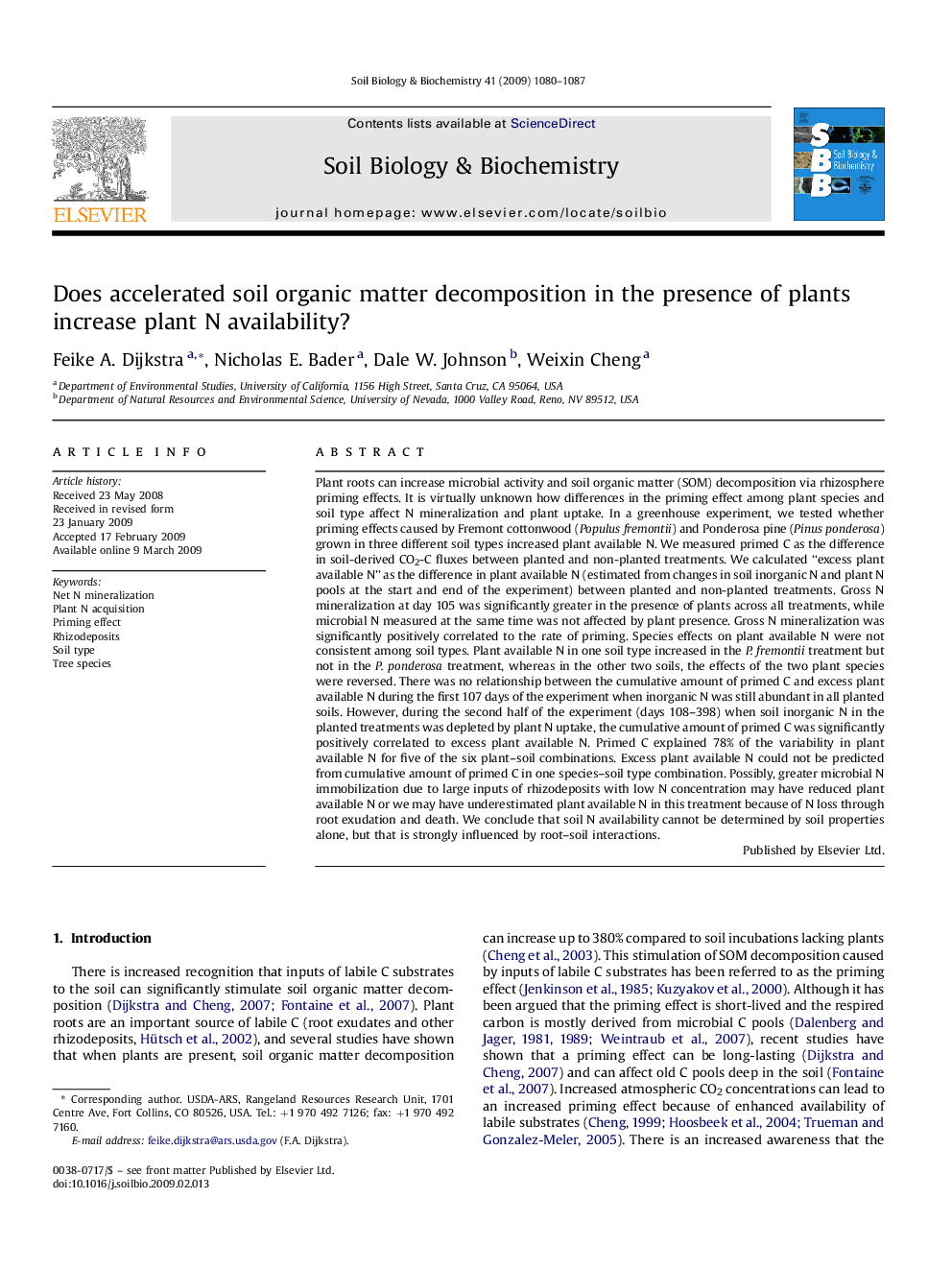| کد مقاله | کد نشریه | سال انتشار | مقاله انگلیسی | نسخه تمام متن |
|---|---|---|---|---|
| 2025606 | 1070004 | 2009 | 8 صفحه PDF | دانلود رایگان |

Plant roots can increase microbial activity and soil organic matter (SOM) decomposition via rhizosphere priming effects. It is virtually unknown how differences in the priming effect among plant species and soil type affect N mineralization and plant uptake. In a greenhouse experiment, we tested whether priming effects caused by Fremont cottonwood (Populus fremontii) and Ponderosa pine (Pinus ponderosa) grown in three different soil types increased plant available N. We measured primed C as the difference in soil-derived CO2-C fluxes between planted and non-planted treatments. We calculated “excess plant available N” as the difference in plant available N (estimated from changes in soil inorganic N and plant N pools at the start and end of the experiment) between planted and non-planted treatments. Gross N mineralization at day 105 was significantly greater in the presence of plants across all treatments, while microbial N measured at the same time was not affected by plant presence. Gross N mineralization was significantly positively correlated to the rate of priming. Species effects on plant available N were not consistent among soil types. Plant available N in one soil type increased in the P. fremontii treatment but not in the P. ponderosa treatment, whereas in the other two soils, the effects of the two plant species were reversed. There was no relationship between the cumulative amount of primed C and excess plant available N during the first 107 days of the experiment when inorganic N was still abundant in all planted soils. However, during the second half of the experiment (days 108–398) when soil inorganic N in the planted treatments was depleted by plant N uptake, the cumulative amount of primed C was significantly positively correlated to excess plant available N. Primed C explained 78% of the variability in plant available N for five of the six plant–soil combinations. Excess plant available N could not be predicted from cumulative amount of primed C in one species–soil type combination. Possibly, greater microbial N immobilization due to large inputs of rhizodeposits with low N concentration may have reduced plant available N or we may have underestimated plant available N in this treatment because of N loss through root exudation and death. We conclude that soil N availability cannot be determined by soil properties alone, but that is strongly influenced by root–soil interactions.
Journal: Soil Biology and Biochemistry - Volume 41, Issue 6, June 2009, Pages 1080–1087